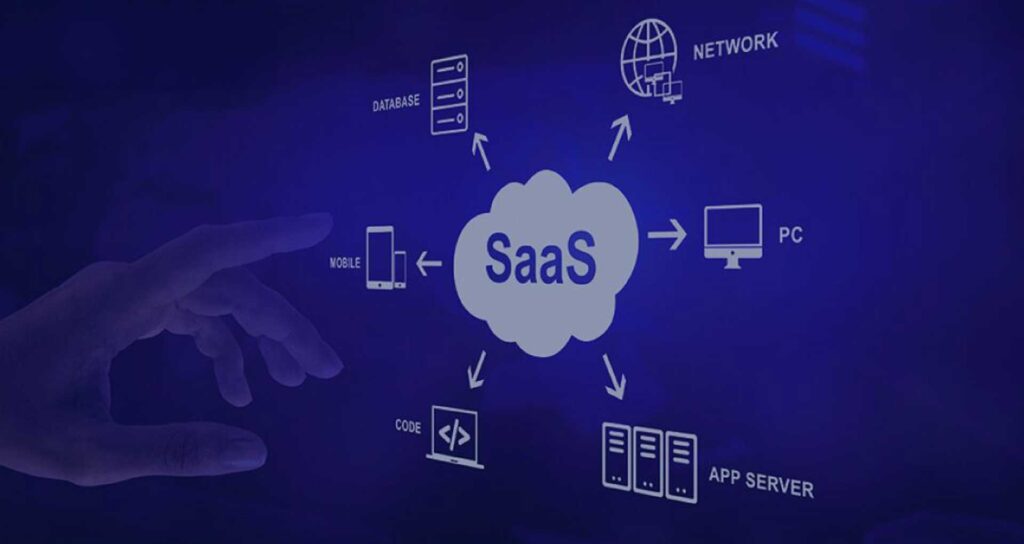
[ad_1]
AI SaaS Product Classification Criteria are key to understanding how businesses can choose the right tools in a rapidly evolving market. As Artificial Intelligence software as a service transforms operations, boosts customer experience, and delivers powerful insights, it’s becoming indispensable. Yet, with so many options, selection can be overwhelming.
Artificial Intelligence (AI) software as a service (SaaS) is revolutionizing the modern market landscape. With its ability to streamline operations, enhance customer experiences, and provide insightful analytics, AI SaaS solutions are becoming essential tools for businesses of all sizes. However, navigating the myriad options available can be daunting. This article aims to decode AI SaaS by outlining essential classification criteria that can help businesses identify the most suitable solutions for their needs.
Difference Between AI and SaaS
What is Artificial Intelligence (AI)?
Artificial Intelligence refers to the simulation of human intelligence in machines designed to think and function like humans. This can include understanding natural language, recognizing patterns, solving problems, and learning from experience.
What is Software as a Service (SaaS)?
Software as a Service is a software distribution model where applications are hosted by a cloud service provider and made available to customers over the internet. Users can access the software via web browsers without needing to install and maintain it on their own devices.
The Intersection of AI and SaaS
AI SaaS combines the advantages of cloud-based software with the capabilities of AI, enabling organizations to leverage advanced technologies without extensive infrastructure investments. This intersection is where businesses can find innovative solutions to enhance operational efficiency, customer interaction, and data analysis.
Classification Criteria for AI SaaS Solutions

When evaluating AI SaaS solutions, businesses should consider a set of classification criteria. These criteria can be grouped into several categories to help clarify the options available.
1. Functional Classification
1.1. Core Features
AI SaaS can be classified based on its core functionalities. Common categories include:
- Data Analysis: Tools designed for data mining, predictive analytics, and business intelligence.
- Process Automation: Solutions that automate repetitive tasks in areas like customer support and supply chain management.
- Natural Language Processing (NLP): Applications that can understand and generate human language, improving communication.
- Machine Learning: Platforms that offer capabilities for developing and deploying machine learning models.
1.2. Industry Applications
AI SaaS can also be categorized by its application within specific industries:
- Healthcare: AI tools for patient diagnostics, personalized medicine, and patient management.
- Finance: Solutions for fraud detection, risk assessment, and automated trading.
- Retail: Applications for inventory management, customer recommendation systems, and sales forecasting.
2. Technical Classification
2.1. Architecture Types
The architectural design of an AI SaaS solution influences its scalability and functionality. Key architectures include:
- Monolithic Architecture: A single unified model that houses all functionalities. Easier to deploy but challenging to scale.
- Microservices Architecture: Breaks down functionalities into separate services, allowing for greater scalability and flexibility.
2.2. Deployment Models
AI SaaS can be offered through different deployment models:
- Public Cloud: Services are delivered over the public internet, making it generally accessible and cost-effective.
- Private Cloud: Dedicated infrastructure for a single organization, offering enhanced security and control.
- Hybrid Cloud: Combines both public and private cloud solutions, providing a balance of flexibility and security.
3. User Experience Classification
3.1. Interface Design
User interface (UI) and user experience (UX) are crucial for effective AI SaaS solutions. Classification based on these aspects can help in selection:
- Intuitive Interfaces: Solutions that offer easy navigation, allowing users to access features without extensive training.
- Customizability: Platforms that enable users to configure dashboards and workflows according to their needs.
3.2. Support and Training
A comprehensive support and training system can enhance user experience:
- Self-Service Resources: Availability of documentation, FAQs, and online tutorials.
- Customer Support: Quality of customer support services, including chatbots, email, and phone support.
4. AI and Machine Learning Integration
4.1. Algorithmic Components
Understanding the underlying algorithms that power the AI functionalities is vital:
- Supervised Learning: Algorithms that learn from labeled data to make predictions.
- Unsupervised Learning: Algorithms that identify patterns in unlabeled data.
4.2. Data Requirements
Different AI SaaS solutions have varying data requirements:
- Real-time Data Processing: Solutions that require immediate data inputs for real-time analytics.
- Batch Processing: Systems that analyze large volumes of data at scheduled intervals.
5. Cost Structure
Evaluating the cost structure is critical for businesses to assess the ROI of AI SaaS solutions:
5.1. Pricing Models
AI SaaS solutions are available under different pricing models, including:
- Subscription-Based Pricing: Monthly or annual fees for access to the software.
- Pay-As-You-Go: Charges based on usage, making it easier for businesses to scale costs.
5.2. Total Cost of Ownership (TCO)
Businesses must consider ongoing costs associated with the solution:
- Maintenance and Support Costs: Regular fees for updates and customer support.
- Integration Costs: Expenses related to integrating the AI SaaS with existing systems.
6. Security and Compliance
6.1. Data Security Features
Security is a major concern when choosing AI SaaS solutions:
- Data Encryption: Ensures that sensitive information is protected during transfer and storage.
- User Authentication: Robust measures to control access to the system.
6.2. Compliance Standards
Adherence to regulations is essential, especially in industries like healthcare and finance:
- GDPR Compliance: General Data Protection Regulation requirements for handling personal data.
- HIPAA Compliance: Standards governing the protection of sensitive health information.
The Future of AI SaaS
As the digital marketplace evolves, so too will AI SaaS. Emerging trends that may further influence classification and adoption include:
1. Enhanced Personalization
AI SaaS solutions are likely to integrate more advanced personalization capabilities that cater to individual user needs, which can significantly improve customer engagement and satisfaction.
2. Integration with IoT
AI SaaS will increasingly interact with Internet of Things (IoT) devices, allowing for more automated data collection and enhanced decision-making capabilities.
3. Increased Automation
The capabilities of AI are advancing rapidly, leading to the potential for even greater automation within SaaS applications, which will streamline business processes.
4. Ethical AI
With the growing awareness of ethical AI concerns, there may be an increasing focus on transparency, fairness, and accountability in AI SaaS solutions.
FAQs
Q1: What is AI SaaS?
AI SaaS combines artificial intelligence capabilities with software as a service, offering businesses cloud-based applications that can analyze data, automate tasks, and improve customer interactions.
Q2: What are the benefits of using AI SaaS?
Benefits include lower initial costs, scalability, access to advanced AI technologies, and reduced IT maintenance burdens, allowing businesses to focus on their core activities.
Q3: How should businesses evaluate AI SaaS options?
Businesses should consider functional capabilities, technical requirements, user experience, cost structure, security features, and industry compliance when evaluating AI SaaS options.
Q4: Can AI SaaS solutions integrate with existing systems?
Most AI SaaS solutions are designed to integrate with existing systems, though the complexity can vary depending on architecture and deployment models.
Q5: What are the challenges businesses face when adopting AI SaaS?
Challenges can include data privacy concerns, integration issues, and selecting a solution that aligns with the organization’s specific needs.
Q6: Is AI SaaS suitable for small businesses?
Absolutely! AI SaaS solutions are often designed to be scalable and cost-effective, making them accessible for businesses of all sizes.
Conclusion
As the AI SaaS market continues to grow, understanding the classification criteria is paramount. By considering functional capabilities, technical needs, user experience, cost, and security, businesses can navigate the options available and leverage AI to drive operational efficiency and enhance competitiveness in the modern market.
[ad_2]





